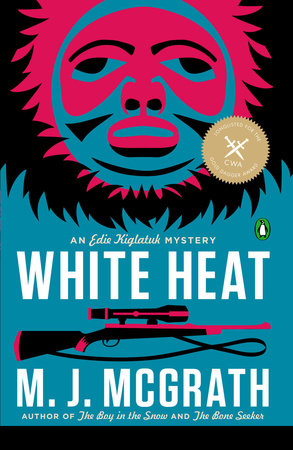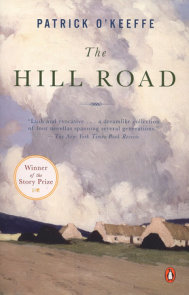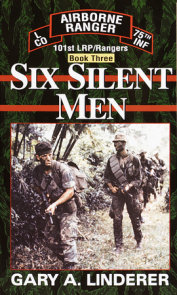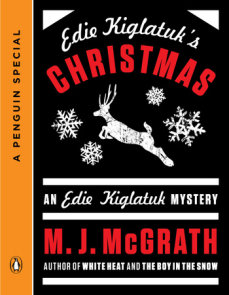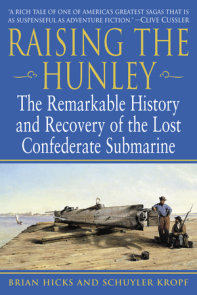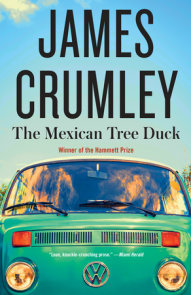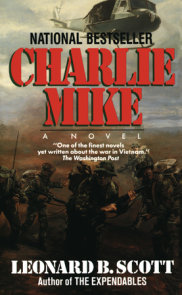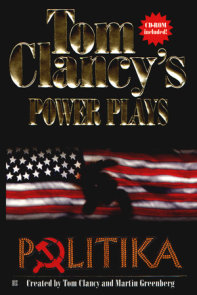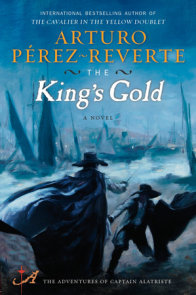READERS GUIDE
Questions and Topics for Discussion
INTRODUCTION
Half Inuit and half qalunaat “southerner,” Edie Kiglatuk is accustomed to living in two worlds. A gifted teacher in the tiny settlement of Autisaq on the frozen coast of Ellesmere Island, she spices up her students’ English spelling lessons with tutorials on how to butcher a harp seal. Even her work as a hunters’ guide has a connection to the qalunaat world to the south: she leads expeditions of foreigners across the tundra to pay for the nursing training of her beloved stepson, Joe, in the hope that he might escape the poverty of expectations that has limited the lives of so many of her Inuit neighbors.
But Edie is about to be thrust into a world beyond her imagination: a world of greed, international intrigue and cold-blooded murder. When a tourist on one of her expeditions is shot and killed by an unknown assailant, Edie decides to search for the killer. The local authorities attempt to cover up the incident, but the horror deepens when a second man—the only witness to the first death—is silenced while on another excursion led by Joe, who fights through a blizzard back to the village. Another death shortly afterward propels Edie to uncover a conspiracy more chilling than the frozen Arctic tundra. Edie’s family irrationally blames her for the series of tragedies, and the half-Inuit police sergeant who would appear to be her natural ally seems more interested in studying lemmings than in pursuing justice. Edie quickly learns that she must call upon all her inborn strength and native wisdom, for only her own persistence and resourcefulness will ever bring the truth to light.
Gaining in confidence and resolve with each uncovered clue, Edie soon finds herself on the trails of multiple suspects, none of whom is precisely what he seems. She crosses paths with a host of memorable characters, including Bill Fairfax, the descendant of an Arctic explorer seeking to recover his ancestors’ past; Professor Jim DeSouza, a physicist who hopes his research will lead him to fortune and glory; and Saomik Koperkuj, an Inuit hermit whose greatest talents seem to be staying alive and keeping secrets. And behind and beneath it all is the harsh, brooding world of the High Arctic—a magisterial teacher of hard lessons and a merciless punisher of those who refuse to learn them. In White Heat, seasoned journalist and first-time novelist M. J. McGrath unlocks a world of austere beauty and intense drama, where the savagery of nature is matched only by the cunning of the human animal.
ABOUT M. J. MCGRATH
M. J. McGrath was born in Essex, England. She is a regular contributor to The Guardian, The Times, The Telegraph and the Evening Standard and is frequently heard on British radio. Under the name of Melanie McGrath, she has written critically acclaimed nonfiction, including The Long Exile: A Tale of Inuit Betrayal and Survival in the High Arctic. Her first book, Motel Nirvana, was awarded the John Llewelyn-Rhys/Mail on Sunday Award for Best New British and Commonwealth Writer under 35. M. J. McGrath lives and works in London. White Heat is her first novel.
A CONVERSATION WITH M. J. MCGRATH
Q. As a journalist, you have written nonfiction about Inuit life. What moved you to address the same subject in your first novel?
There were plenty of stories still to tell that lent themselves better to fiction.
Q. Fiction would seem to call on a different set of skills from those required for journalistic reportage. What, for you, are the most significant differences between the two kinds of writing?
I’m not so struck by the differences as by the similarities. Both forms are above all about telling stories.
Q. It seems that Edie’s deepest attachment to what she might call “southern” culture comes through silent comedy. When did you pick film as one of Edie’s passions?
Once you put your mind to imagining them, characters really just emerge, so it’s not really a question of “picking” their passions. To me it makes perfect sense that Edie is a lover of silent comedy. In general, Inuit people really love to laugh and they often seem to be attracted to slapstick. There’s a quick-thinking athleticism to the rough and tumble antics of the great comedians of the silent era that very much mirrors the kinds of daily mental and physical acrobatics required for survival in the Arctic. Like many Inuit, Edie is both resourceful and courageous, so it makes sense that she would admire that quality in other people. Then there’s the fact that though the Arctic isn’t quite literally black and white, it’s a landscape in which colors are very muted, so it might well feel more familiar to Inuit than a southern movie shot in full color.
Q. You say in your prefatory note that Inuktitut offers descriptive terms that have no equivalent in English. Can you give us an example or two of instances where you found the resources of English especially inadequate?
The most obvious one is the old cliché that Inuit have fifty (or one hundred or two hundred) words for snow. In the Arctic, having the language to describe precisely a very particular kind of snow or ice might well make the difference between life and death. So it’s not so much that they have dozens of words for snow; it’s more that, for the Inuit, there are dozens of kinds of snow.
Q. It seems obvious from reading White Heat that Inuit life has been altered by the presence of “qalunaat,” or white people, from the south. What are your own thoughts about the future of Inuit communities?
Some people talk about the recent impact upon Inuit of qalunaat in their midst, but Inuit have actually been in contact with qalunaat ever since the Vikings more than a thousand years ago. While it’s true that for hundreds of years the contact between Inuit and qalunaat was brief and sporadic, Inuit and qalunaat have been developing trade and cultural links ever since whalers first came into Arctic waters in the seventeenth century.
Many Inuit communities were devastated first by southern diseases, then by alcohol. They were discouraged from pursuing their traditional cultural practices first by missionaries, then by governments. Many Inuit children were sent away to residential schools in the south and came back unable to speak Inuktitut and communicate with their parents and with none of the skills they needed to survive in the Arctic. Some Inuit communities are still reeling from the joint impact of disease, alcohol and cultural dismemberment but in recent years Inuit have begun to wrest back control over their own lives and I am hopeful that this process will continue.
Q. The natural world you depict is violent and inhospitable, and the lives of some of your characters have been warped by alcohol and lack of opportunity. Yet, at the same time, White Heat also communicates values of beauty and redemption. What do you think makes this seeming paradox possible?
The Arctic itself. Life there is extraordinarily tough but at the same time Inuit recognize that they live in one of the most extraordinary and beautiful places on the planet. People learn the values of solidarity, resourcefulness and resilience. They also learn not to take life too seriously.
Q. You observe early in White Heat that in the High Arctic, “violence was embedded in almost everything” (p. 26). How do you see this omnipresent violence as influencing the lives and characters of Inuit people?
The natural world is violent; it’s just that those of us living urban or suburban lives in towns and cities are generally sheltered from it.
Q. Reading White Heat one gets a sense of foreboding and dark destiny regarding the fate of the region. What hope do you see?
There’s no doubt that the Arctic is changing, but its fate depends in large part on the decisions we make in the south. One of my reasons for writing about the Arctic is because I feel passionately about it and I hope that in communicating that passion to other people, I might make a very small, personal contribution to the debate.
Q. At the end of White Heat, Edie has solved the mysteries of the plot. However, she is still some distance away from finding the answers in her own life. Do you intend to resume the story of her personal quest in a sequel?
Yes, I do. As a matter of fact, I’m in the process of finishing the second novel in the Edie Kiglatuk series, in which, among other things, she is forced to take on a very painful secret from her past.
DISCUSSION QUESTIONS
A NOTE ON INUKTITUT PRONUNCIATION
The sound of Inuktitut is generally soft and modulated. Ever mindful of community cohesion, Inuit rarely raise their voices.
There are three basic simple vowel sounds in Inuktitut: i (pronounced “ee”), u (pronounced “oo”) and a (pronounced “ah”). Vowels also combine into other sounds, for example, “ai” is pronounced “ay” as in “hay.” Double vowels are held for longer. “Qi” is a guttural sound made at the back of the throat. Similarly, when “I” or “u” appears before “q” or “r” it softens the consonants, so Iqaluit, the capital of Nunavut in Arctic Canada, is pronounced “ee-kh-al-oo-eet.”
The following consonants are generally pronounced as in English: t, k, g, m, h, n, s, l, v. R is similar to the French r or the Spanish j. P, f and b can sound similar. J is pronounced “yi” or, when doubled, “dj.” A double “s” is pronounced “ts.” T and qat the ends of words are often pronounced with a glottal stop,
Hello—ai—pronounced “a” as in “hay” Goodbye—assunai—pronounced “atsoonay” Yes—ii—pronounced “ee” No—aakka—pronounced “ah-ka” How are you?—Qanuipit?—pronounced “ka-nwee-peet?”
To listen to Inuktitut words spoken, go to www.tusaalanga.ca/splash









